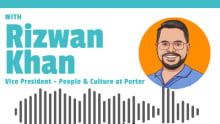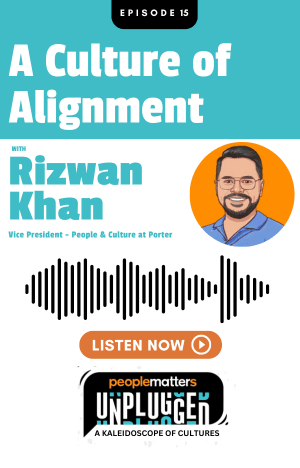Performance management must be aligned to the new reality: Fahad Naeem

In a world of changing business norms, performance management needs to stay up to date. People Matters asked Fahad Naeem, Head of Operations, Randstad Malaysia, for his observations of post-COVID trends and how performance management must match these.
Naeem has close to 10 years' experience in the HR industry and specializes in technology recruitment, matching highly-skilled and experienced technologists across all levels with leading firms to drive Malaysia's innovation agenda. As Head of Operations, Naeem manages business strategies and finances, as well as local operations in talent recruitment.
Here are the excerpts of the interview.
We have seen a lot of new trends set in the wake of the pandemic. What trends do you think will last longer and have significant impacts for businesses globally?
COVID-19 has fundamentally changed the employee experience and company’s perception of its operations. We can confidently say that expectations on both sides have also changed. Three key trends have the highest potential of becoming a permanent feature in human capital development—flexible work arrangements, integrated workforce, and skills development.
1. Changing expectations in work arrangements
More and more employees would want to work for a company that provides a flexible, hybrid working arrangement, where they can choose to work in the office or remotely. According to the Randstad Workmonitor 2H 2020 survey, 48 percent of respondents said that their ideal work environment in a post-COVID-19 world would be a combination of working from home and in the office. 14 percent want to work from home all the time. There are several reasons why candidates and employees are seeking this benefit. Some want to save on commuting time to run personal errands, while others may find themselves more productive when they work from home.
Companies need to be aware of this changing expectation and explore the best ways to facilitate remote digital collaboration. HR teams will be responsible for driving this initiative with business leaders and striking a balance between meeting business needs, maintaining engagement and productivity, as well as ensuring a positive employee experience.
2. An integrated workforce strategy
Companies traditionally tend to hire permanent employees, as it is perceived to offer managers a sense of stability where their teams are concerned. Employees also prefer permanent roles as it gives them a better sense of job security.
However, COVID-19 has proven that companies need to be always prepared for different situations, such as business restructuring, financial crisis, or organizational change. Having a largely permanent workforce would mean high fixed expenditures, which is difficult for companies to adjust when necessary.
Organizations are more likely to adopt an integrated workforce strategy moving forward, where there is a healthy combination of permanent employees, contract workers, and freelancers. This allows organizations to practice more financial flexibility when it comes to workforce cost management. Hiring requirements will also take a more skills-focused approach as opposed to the linear growth that is typically based on the individual’s years of experience.
Also Read...
- An interview with Tomas Chamorro-Premuzic, Chief Talent Scientist at ManpowerGroup
- World Bank’s Annette Dixon on how COVID-19 will change the world forever
- 10 Global leaders on what they learned from the pandemic
- An interview with HR leader William J.T. Strahan
- Technology is simple, but culture is hard: Dr. Jeffrey Sanchez-Burks
Companies that have an integrated workforce strategy tend to benefit from having access to talent with diverse skills and experience as well as internal knowledge transfer, which will in turn enhance the value of the organization’s human capital.
3. Lifelong learning
The pandemic has accelerated digital transformation at an unprecedented level, which has resulted in the widening skills gap. There are emerging roles from new technologies that the workforce may not be prepared for, as the skills required for these jobs did not exist until recently.
Given the novelty of these skills, the eligible talent pool is considerably small. The competition for this talent is very intense too, as countries and companies around the world are trying to engage with the same candidates.
Employers need a two-pronged approach to developing their human capital—hiring new talent and upskilling existing employees. Organizations that invest in their own talent development are often seen to be attractive employers, which would lead to wider access to the talent pool and a more loyal workforce.
Do you think COVID-19 has transformed the role of HR? From engaging the remote workforce's productivity to nurturing a new culture in dispersed workplaces, it seems they have more to deliver in the current scenario. What’s your take?
The human resources industry has definitely taken the lead in 2020. From shifting operations out of offices to driving remote employee engagement, human resources practitioners are starting to assume the role of a business partner. HR professionals have also driven various initiatives in response to the COVID-19 pandemic, such as implementing new workplace safety protocols and revising corporate insurance policies.
This year, human resources professionals will be expected to drive conversations about changes to employees’ career development, performance management structures, and workforce management. For example, HR executives may propose new changes to performance measures that reflect remote working, or design online training courses to facilitate upskilling with the existing employees.
HR teams are also expected to keep pace with the latest HR tech developments and propose new solutions that can drive productivity and reduce cost. Some examples include investing in cost-efficient chatbots to automate the process for frequently asked questions from candidates and employees, which will enhance the experience and re-assign resources to more business-critical activities.
Are organizations shifting the needle on performance assessment and productivity management amid this crisis? How do you see the larger picture?
The way performance is assessed and measured must be aligned with the new environment and prepared for the future when remote working is expected to become a common practice.
It is tougher for bosses to manage workers remotely. One of the biggest challenges for managers is to ensure that their employees are putting in 100 percent of their effort when working from home and not distracted by other leisure activities. However, this can be overcome through the use of project management tools and digital KPI setting tools. One downside to these digital tools is that they tend to only track outputs instead of inputs, which makes it difficult for managers to train and upskill their employees.
For example, in a sales environment like Randstad, managers need to train employees on how they interact with clients on the phones and during meetings. Traditionally, the manager will sit next to the employee during these calls and evaluate their performance after to fine-tune their approach. However, this can prove difficult when the manager does not have a baseline to evaluate.
With remote working becoming a norm, employers must move away from the point grading system and have regular discussions with their team members instead to understand their challenges at work and recognize small wins.
These regular discussions can help to facilitate conversations about the growth and development of the employee to help achieve their personal career goals. Employers and employees should be working together to align and streamline the setting of goals, timelines, and expectations for better accountability and foster a culture of agility in the workplace.
How does your performance management system look like? How do you assess and manage performance and productivity amid this chaos with different types of workers especially virtual workers?
We conduct regular one-to-one performance review sessions with our employees. While there is a standard structure to these sessions to discuss challenges and achievements, the flow and tone of it are determined by the manager, and leaders are encouraged to have conversations instead of conducting one-way evaluations. The manager also takes the opportunity to discuss career growth opportunities and encourage the team members to proactively attend webinars and online seminars to build their network and upskill themselves.
How can leaders enhance the morale of virtual workers effectively so that they feel engaged and stay productive?
There is a greater focus on internal communications to not only educate the workforce about COVID-19 developments but also engage them on a more personal level. Many companies have incorporated the use of digital communications platforms such as Facebook@Work or Google Currents, or have enhanced their intranet network. These solutions also have fun tools such as polls and quizzes to facilitate virtual happy hours or work out sessions.
In 2020, Randstad Malaysia has conducted virtual auctions to help raise funds for low-income groups to give back to our communities. A group of volunteers has also designed and conducted weekly ‘Wacky Wednesday’ quizzes to keep our employees engaged and positive.
These activities can only be successful if everyone aligns their perspective of how the organizational culture would look like.
Senior management executives should give their managers more autonomy on employee engagement within their own teams. They can also adopt a more approachable tone when speaking with their employees and be more proactive when it comes to engagement. This will not only encourage those who are reluctant to ask for help when needed but also encourage the sharing of new ideas that might benefit the business.
How can companies commit to a continuous feedback culture and have clarity between assessment and development?
Many people are hesitant to give and even more fear to receive negative feedback from their bosses. Some individuals also tend to have a passive-aggressive attitude or tone, which does not flow well with the rest of the team, which could damage the organization's culture in the long run. When employees don’t share their challenges or personal viewpoint in fear of repercussions, it can be detrimental to both the organization and the individual.
These are some of the reasons why people are reluctant to have honest conversations about their performance and development with one another. If not addressed directly and quickly, employees will start to reserve their opinions, detach themselves from the company, and find another employer.
Managers and employees alike should get into the practice of sharing ideas and feedback openly and regularly. Organizations should provide adequate training to employees on how to give and receive constructive feedback, as well as recognize good work. And while the review structure can be implemented by the HR team, individuals must feel comfortable and confident about giving and receiving constructive feedback on performance.
Read more such stories from the February 2021 issue of our e-magazine on 'Shifting Paradigms in Performance Management'














